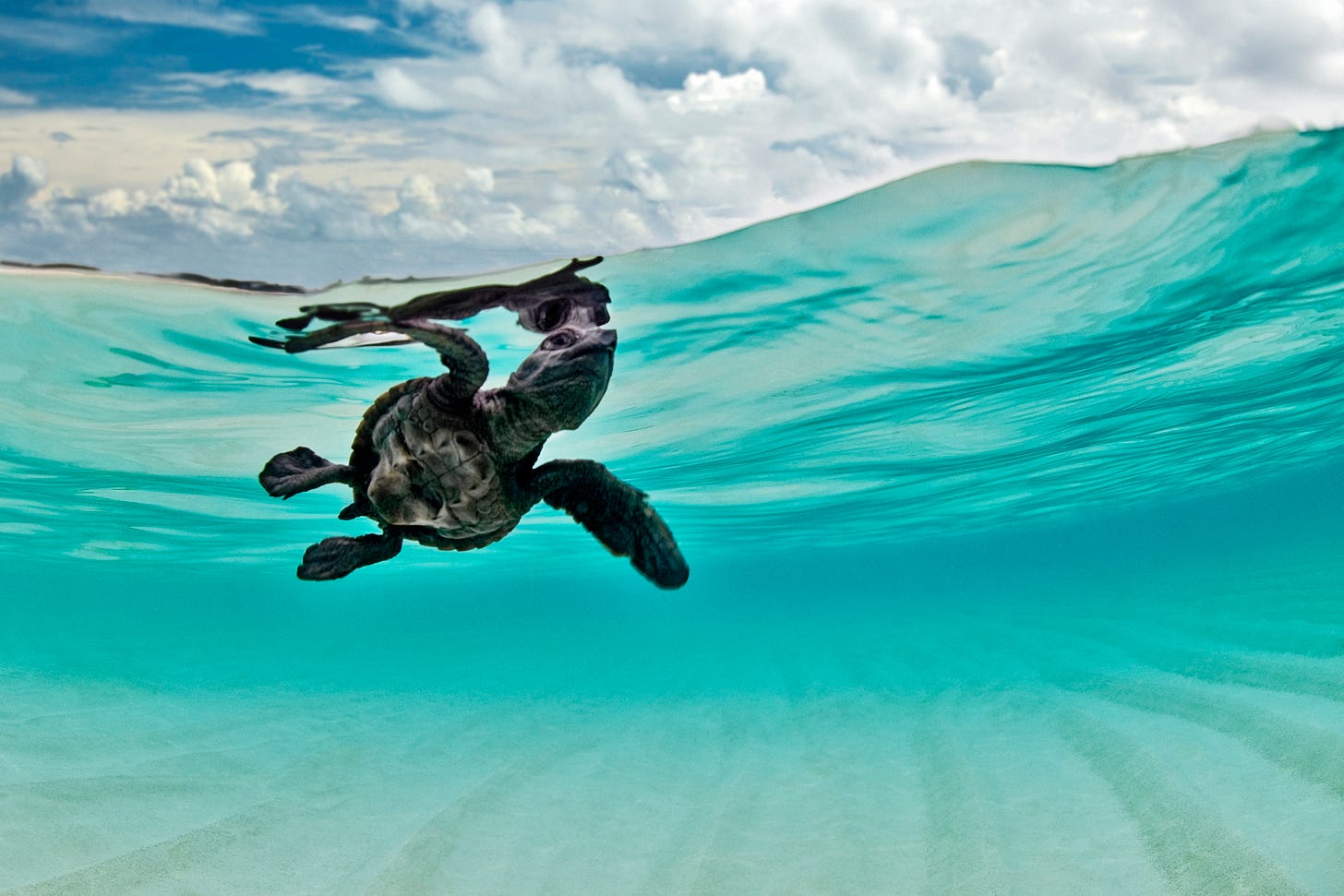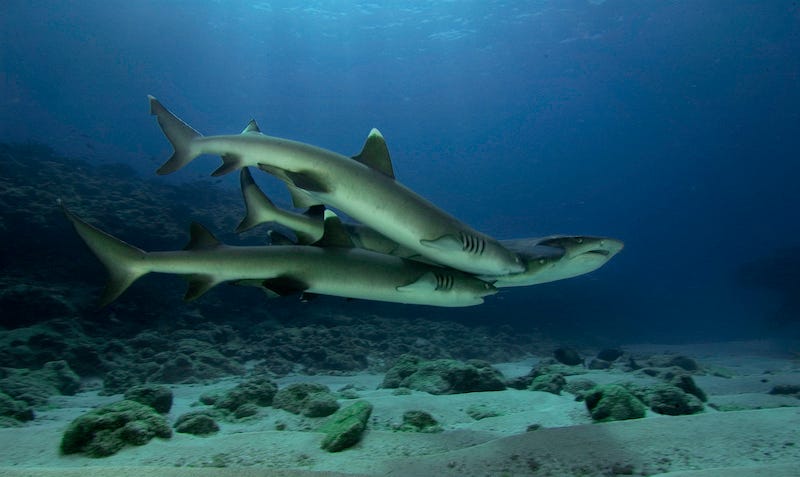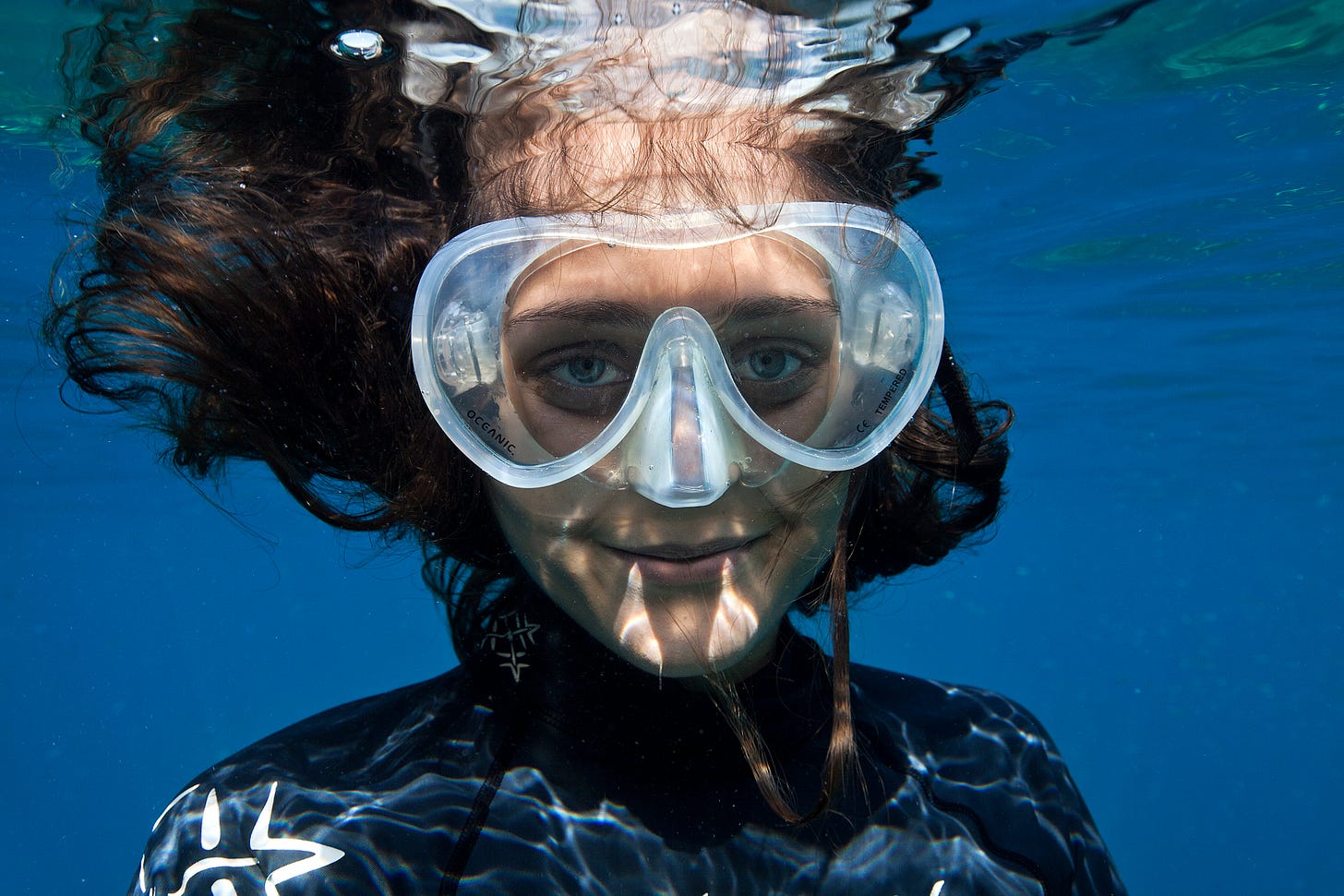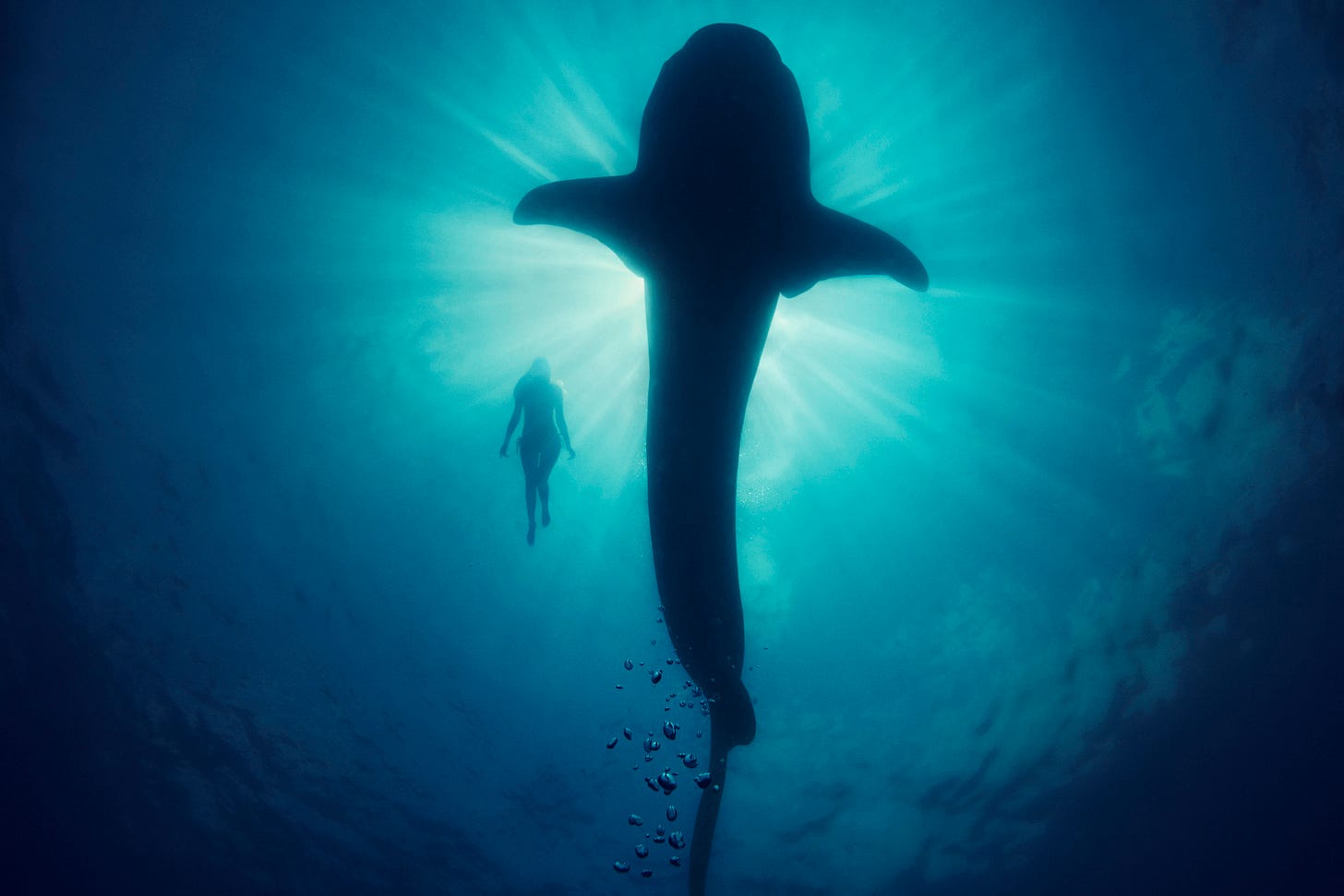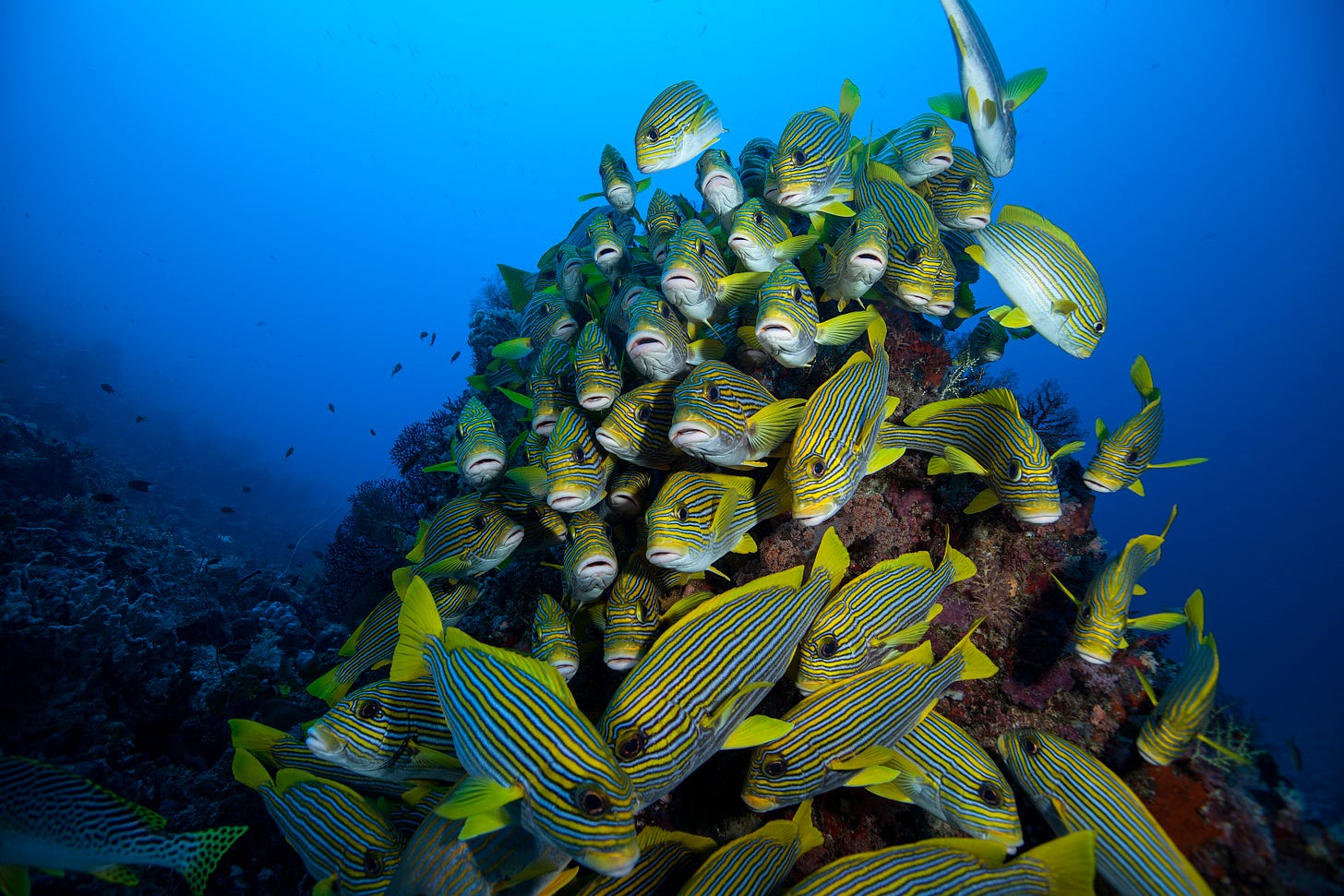Planet-Positive Indians
Selfless service is an integral part of yoga, and Apurva Kothari, Nayantara Jain and Sumer Verma have dedicated their lives and creativity to find solutions that favour and protect our planet.

Apurva Kothari was living the Indian American dream — working as a software engineer in San Francisco and then New York, earning good money, travelling, and enjoying life until sitting at a cafe in New York, he read an article about farmer suicides in Vidarbha, a village that’s a few hours from Bombay. “I reached a point in my career where I didn’t know why I was doing what I was doing. Besides the money part of it — buying better clothes, buying better wine — it didn’t feel like there was much meaning to my work. This article hit a nerve. These suicides were happening close to Bombay, where I’m from. Vidarbha is an overnight train ride away from Bombay. I thought to myself, ‘how can I hear about this only now. I’m from India and I’m reading about this in New York.’ At the time, I was still a software engineer but as it turned out, we moved back to India a few years later and decided to quit my IT job. I was already doing some research and meeting people to find solutions and find out why there is such little awareness about the farmer suicides. I wanted to create awareness of the issue and provide a solution but not as an NGO. I wanted to create real change in day-to-day life,” says Apurva about the first time he thought of doing something that would help the farmers.
He founded No Nasties in 2011 to support the cotton farmers in Maharashtra (India’s cotton belt). These farmers were in debt, struggling with poor prices from farm produce, government apathy and crop failures due to excessive and chronic use of chemical fertilisers. No Nasties is India’s first fair trade, vegan, organic cotton clothing label and Apurva’s vision for this label is to create fashion that’s accessible, affordable and planet positive. I first connected with him when I had gotten in touch with No Nasties to offer them a complimentary ad for a yoga magazine I was working on in 2019. I’ve been following his work since and I knew he had to be a part of this article when I thought of writing it.
Apurva possesses an endearing, disarming disposition that draws you to his cause and inspires you to root for him. And, it’s a fantastic cause — one that affects us all. “I was a very happy-go-lucky-guy. I didn’t know a lot about cotton and I know very little about fashion even now. But, I learned. I met farmer groups and understood what organic farming is and what fair trade means. India has one of the largest number of fair trade farmers in the world and yet, the term ‘fair trade’ is still not known in India. We’re a fair trade producing nation. Typically, the north and the western countries are the buyers and consumers, and the south, like Africa, South America, South East Asia, India….produce. Our farmers know fair trade and understand the concept. As a philosophy, the fair trade movement makes sure that there is no exploitation of anyone who is making a product for you. The fair trade movement ensures no one is really left out of the system. It’s about empowering and offering employment with the right wages. It’s broken down into social, financial and economic benefits. So the economic part is that you have to have a minimum selling price for every commodity — a fair trade price which ensures that the farmers get money for their produce and they also get a fair trade premium which goes to the farmer community. Our Indian farmers know how to do organic farming, a fair trade supply chain exists, the co-ops exist — it was just a question of someone coming in and telling these farmers, ‘I will buy your cotton and market it.’ I felt Indian consumers should be helping Indian farmers and I created No Nasties as a platform for change. Initially, we were just a T-shirt label.”

As Apurva explored the industry, he was exposed to the environmental and human rights violations that are rampant in the fashion industry and that fuelled his determination to create a better alternative that saves lives and the planet. “The clothing industry, especially, has been horrendous. The clothing supply chains have exploited one country after the other. There’s also the problem of child labour. When we started, the numbers were around 60 million child labourers in India alone. I read articles about children making clothes for children — a big label was employing child labour for their clothes. So think about it, the clothes our kids are wearing are being made by other children. It’s crazy! Exposure to these realities just shook me and a solution had to be found.”
While Apurva employed the fashion route to create positive change, Bombay-based Sumer Verma and Bangalore-based Nayantara Jain found their planet-saving purpose in marine conservation, underwater photography and scuba diving. Sumer’s first dive in India’s Lakshadweep Islands allowed him access to nature that he never experienced growing up in a city. “My first dive was when I did my open water course in 1997. I was blown away by the experience — living on an island, white sands, sleeping under a blanket of stars. Then there’s the world under the surface. Teeming with life (turtles, sting rays, dolphins, eagle rays, schools of fish, coral reefs) in unfathomably beautiful, clear water with 20 to 30-metre visibility. It was awe-inspiring and transformative for me and I decided then that I definitely want to do more diving and live on an island. It’s incomparable to city life,” says Sumer. “I was already dabbling in photography. I enjoyed playing with black-and-white film photography as a hobby but when I dived, I understood light differently. The way light comes through the surface and creates shimmer and ripples, and all the fascinating creatures that I encountered made me instantly feel like, ‘man, I want to photograph all this.’ I was inspired by this beautiful world and wanted to capture it. I also wanted to share the experience as at the time, very few people in India, especially in the cities, were clued into diving or water sports, or for that matter, even the islands. We didn’t even know about all this incredible marine life that exists in India in such pristine conditions. When I started photographing and filming underwater, I found it to be a very fulfilling hobby. It was deeply absorbing and deeply challenging. When you’re underwater, you’re weightless, your breath is slow, your mind is quiet. So when I photograph in these conditions, I’m completely absorbed in the process.”
Sumer worked as a diving instructor on the Lakshadweep islands for 13 years and the self-taught photographer figured out how to shoot underwater by reading books like The Underwater Photographer by Martin Edge. “This wasn’t really a career option and there was nobody doing underwater photography in India, so the islands were my playground to experiment and learn. Shooting underwater is both thrilling and challenging. I learned all the basics from this book — how to get a sharp image underwater or why it’s preferable to use a wide-angle lens (14 mm, 16 mm) underwater, what compositions work... plus, just how to deal with all the blue (laughs). The blue in the water scatters and diffuses the light so I had to work around all of this and taught myself through experience and trial and error. For the longest time, photography remained a hobby.”
Sumer’s first reality check on global warming came within six months of his first dive. When he returned to the Lakshadweep Islands in 1998, after the monsoon, the coral reefs he loved so dearly were gone due to coral bleaching caused by global warming. “There was a drastic change in the quality of the ocean in just six months. There’s this warm current called the El Niño current and it’s getting warmer every year. These currents can change ocean temperatures and that’s what happened in Lakshadweep. Coral reefs are fragile and sensitive, just a half or one degree rise in temperatures can cause bleaching. There has been mass coral bleaching across the world in 2000, 2010, 2019, from the Maldives to the Great Barrier Reef. When I witnessed the damage that global warming is doing to our oceans, it moved me. As usual, nobody had a clue and I felt it was important to spread awareness of our precious oceans. I used all the stock footage I had to create a documentary called Troubled Waters (2006) that highlighted the effects of global warming on our oceans. The film did well, winning a National Award, and it was shown in various schools and colleges. In 2011, we moved operations from Lakshadweep to the Andaman Islands and set up Lacadives, India’s first diving centre and school. Famous ad-man Prahlad Kakkar was founder of this school and he also set-up ReefWatch Marine Conservation to protect coral reefs and marine life, which is now headed by Nayantara.”
That brings me to the third Indian featured here and I saved the best for last. Nayantara’s call to conservation came when she witnessed coral bleaching in the Andamans. “My first dive was in the Maldives while I was on holiday with my family, and I ended up doing the open water course as the instructor encouraged me to do so given we had enough time. It was an incredible experience and even though I have always loved nature, this experience was most different from any other. I grew up in the small villages and towns of Karnataka, and my family often went on holidays to the forests of Kabini and Nagarhole, so I was used to wildlife. What was different is that on land, we’re always in a vehicle and there is a disconnect. Like we’re an audience. But underwater, there are no boundaries. It’s almost as if you become a fish — you’re part of that ecosystem and connected directly with it. It’s like the French Marine Explorer Jacques Cousteau said, ‘the best way to see a fish is to become one.’ A few years later, I was doing my advanced diving course in the Andamans and I had a fantastic instructor who changed my perspective on diving. He made it about the feeling rather than the seeing,” recalls Nayantara.
She continued to work on the Andamans as a dive instructor but in 2010, after she witnessed the coral bleaching in the Andamans, she thought about shifting the focus of her work to marine conservation. “I had been helping marine researchers collect data and worked with them so even though I didn’t have an undergraduate degree in the sciences, the Scripps Institute in California accepted my master’s application as they considered work experience in lieu of an academic background. I wanted to study marine biology because while I see a lot of marine researchers doing amazing things with theory and data collection, I didn’t see them applying those findings to real life. I wanted actionable solutions. So I went to Scripps to study and do things correctly when I get back to India.”
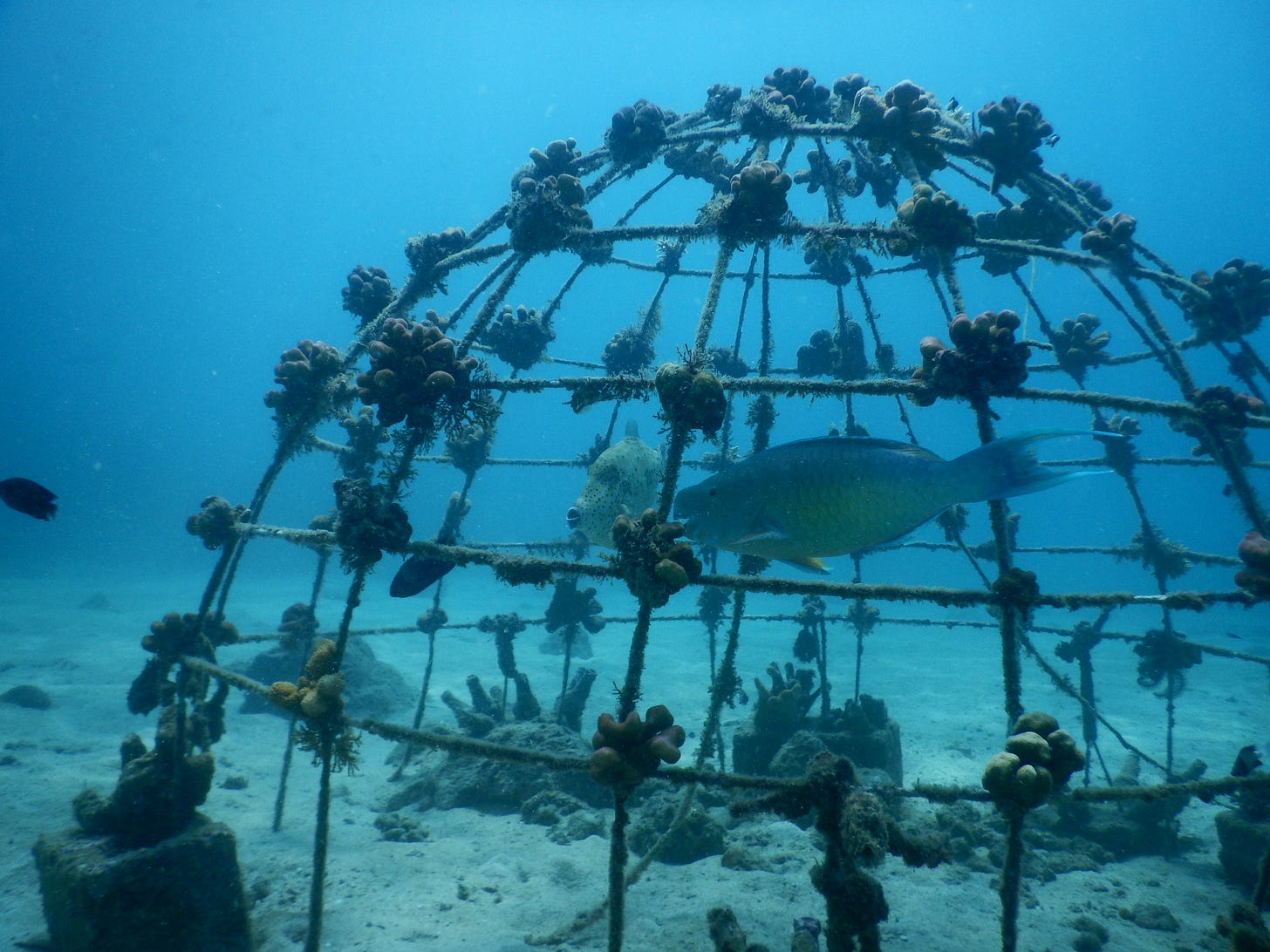
Listening to Apurva, Sumer and Nayantara talk about their journeys is inspiring but just what does it mean to follow your dreams, especially when those dreams are alternative, unconventional and in some cases, meant creating something out of nothing. I was curious about their idealistic approach to conservation and ethical business practices. Looking at their lives from the outside, one can’t help but feel a little envious and at the same time, admiration for their freedom, their choices and their determination to stand by their dreams and convictions against all odds, and they had all odds stacked against them.
After the initial wave of great feedback and publicity, Apurva got his first taste of the challenges of trying to do ethical, sustainable business. “We were the first fair trade licensed brand in India and getting this was an uphill task. Our supply chain, especially in India, is built around exporting, so when a small label like ours wanted just 500 or a 1000 shirts, most manufacturers just hung up on us. It was also hard to convey our message. Fair trade was unheard of at that point and the term organic was just starting to take form. Also, people just assume that natural is organic — because cotton is natural it must be organic, so it was hard to make people understand what we were doing. When you claim you are sustainable and organic, there is cynicism. As opposed to questioning how the conventional high-street brands are making their clothes, we were questioned about our practices and someone even asked me if fair trade and sustainability were marketing gimmicks. These questions should be directed at big labels and brands — where are those clothes being made and who is making them?” Asks Apurva. “There was definitely a stage where we were broke. I had to put in my own money and invest my savings to give No Nasties a new lease of life. We even had a famous Bollywood actor who wanted to support the label and we moved production to a factory in Tirupur but the factory completely failed us. They goofed up the order and we lost the client. I found the strength to pull through. I had a lot of support from my team and we started again, and we started small. Luckily at the time, I had the funds to do this and we moved operations from Bombay to Goa. It’s difficult to run a small business in India, especially in a big city like Bombay, as the expenses are so high. Rent, EMIs, and the cost of living are just too high for a small business. So it’s not easy.”
While Apurva dedicated himself to expanding No Nasties to casual wear instead of just T-shirts, back on the islands, Sumer and Nayantara were working hard to spread awareness about marine conservation and create a community of Indian divers and people who can appreciate and respect what they’re trying to build. “One of the biggest problems with marine conservation is lack of awareness,” observes Sumer. “A silver lining is that the Andamans, thankfully, are still beautiful because the government has actually maintained and protected the islands — they don’t allow any development and are actually strict about it. Sadly, the same is not the case underwater. The problem of trawlers and excessive fishing is taking a toll on marine life and unfortunately, the government actually promotes fisheries. The overall picture needs to change. Nature needs to be seen as a resource. I became interested in conservation because frankly, I’m alarmed at the rapid rate with which we’re destroying the earth. I mean there are so many unethical business practices and these big multinationals just think it’s totally ok to grow their business with complete disregard for the planet — and all this just to make a profit! So it’s a very imbalanced world we’re living in and I don’t think it’s fair to put the responsibility of conservation on regular folk. It’s just not fair. Laws need to change and they need to be implemented on a larger scale. It’s not fair to put this huge responsibility on the people and blame tourism for everything. This media propaganda to tell people that we should all be responsible is just a con job! For real change to happen, it’s the companies and the industries and the governments that need to change. But, that doesn’t mean we can’t do anything as individuals. The first thing to do is become aware. Then manage your own consumption in a better way by making planet-conscious choices. Simple things like carrying your own water bottles, using eco-friendly products, reusable plastic — these are not just fads, they’re a necessity now. The younger generation is very vocal about what we’re doing to the planet. It’s their future, too, and I’m happy to see young people take up these important causes, like Greta Thunberg, for example. We need better policies as well. For example, the powers that be are still deciding whether the fishing of certain shark species should stop or which species can be fished and which can’t. Over 100,000 sharks are killed for shark fin soup every year and they’re still debating?! I mean...there needs to be a total ban! Do you have any idea what kind of large-scale ecological damage will occur if there are no sharks in the oceans? And, it will affect us, too. I really hope the next generation continues to voice their concern and change things. And I don’t mean to sound cynical. I know there are a lot of young people who are doing a lot of good work for the planet and are very environmentally conscious but we have to keep the pressure on. This pandemic has changed a lot, too. It’s made us aware of how fragile all life is, so this is time to step up and do better. I know that nature is resilient and nature will bounce back. It’s going to outlive all of us. What we don’t realise is that we need nature to survive, not the other way around. Whatever we do to the planet, we will have to deal with the consequences as a collective, and that is why we have to protect the planet because when we do that, we protect each other and our home.
We are not beyond salvation and we have time to make changes to see a better, healthier world.”
So how does one become aware? Sumer had the blessed opportunity to discover his life path in his early 20s and his decision to choose this life was instant. But how do the rest of us help when we don’t even know where to start? Nayantara offers a solution. “Inclusivity. My own journey to conservation started when I was a tourist in the Maldives. If done well and with integrity, I believe tourism can actually help. When I was doing my advanced diving course in the Andamans, my instructor educated us about the ecological aspects of marine life and gave us access to this whole other world. He made it a point to educate us. For example, I remember on one dive he showed us this fish that stayed still on the seafloor with its jaw wide open. This is the male jaw fish and it sits there because the female deposits eggs into its mouth. The male incubates the eggs in its jaw for weeks and doesn’t eat till the eggs hatch. Once the eggs hatch and the baby fish swim out, the male jaw fish dies. It has fulfilled its purpose. These incidents made me realise that education and information can create positive tourism. I applied this to ReefWatch and introduced the Voluntourism Programme where we have volunteers who come and stay with us to learn about diving, marine conservation, etc., and they come from various vocations. I don’t think conservation and commercialisation should go head-to-head. It’s not a competition. And if we keep fighting, we will lose. Tourism can also work as conservation. The approach has to be to include, to educate and when that happens, we learn to love and respect our environment. We protect what we love. You don’t have to be a conservationist to make a difference. Caring is enough to start making a difference. Start with yourself and your lifestyle choices. I wanted ReefWatch to be a platform for people who care about the ocean and want to give back using their own skill set and by helping in any way they can,” explains Nayantara. And, in the happiest of coincidences, during this interview, she proved that as far as planet conscious choices go, she puts her money where her mouth is. I told her about featuring Apurva here as well, and Nayantara told me that the jumpsuit she was wearing just happened to be from Apurva’s No Nasties, and she loves it. I just had to share this beautiful coincidence with you, dear reader. Good energy attracts good energy. I was thrilled that Nayantara is wearing No Nasties and how beautifully we’re all connected.
Where Do We Go From Here?
Apurva, Sumer and Nayantara have spent the past decade (or more) diligently persevering to make a positive difference, and it’s almost cathartic that the COVID crisis we’ve been dealing with for almost two years came at a time when the climate crisis is on everyone’s mind and we’re seeing how climate change affects all our individual lives. How did our eco warriors deal with COVID and what are their plans for the future? For Apurva, COVID was both a blessing and a curse. “Our business has done better in the last one-and-a-half years than ever. Two reasons, everyone switched to buying things online so e-commerce has done well and the other reason is that a lot of city folk moved to Goa during COVID, and they visit the No Nasties store so we have people shopping as well. The flip side is our supply chains got affected. This definitely affected the farmers as state borders were closed so they couldn’t move goods. It was difficult to see what they were going through. There are no hospitals or even towns around some of these rural areas so it was harder for them to cope. We had to stop product development for a year-and-a-half and most of our revenue was coming from B2B sales and mostly in the travel industry so that kept us going. But this entire situation made me realise that everything I was trying to do is still not enough. We still have a carbon footprint even though it is low. Organic cotton uses less water and emissions are around 46 per cent less than conventional cotton. I knew we were on the right path but I kept thinking it wasn’t enough. We started planting trees for every product we sold and three years ago, we went carbon neutral but even then, we were just slowing down the problem, not solving it. Every sustainable brand is just making their product less bad than conventionally made products. But less bad is still bad, so we did a lifecycle analysis and calculated the carbon footprint for our product lifecycle using international formulas, databases and standards, etc. We looked at our supply chain from farm to factory, we looked at each style’s fabric consumption and we came up with numbers for water, energy, pesticides and CO2 footprint. Once we had these numbers, we knew how much damage we are causing so we can take measures to minimise it and also to reverse and offset it by planting trees. We were carbon neutral but that wasn’t enough, I wanted to make sure we’re making a positive impact,” asserts Apurva.
In November 2021, No Nasties launched their Planet Positive Clothing website and Apurva ensures that every purchase at No Nasties is a planet-positive purchase. “You don’t have to feel guilty when you buy a No Nasties product. This is actually positive consumption (laughs).”

Meanwhile, Nayantara and Sumer have joined forces to create the Big Tree Resort on Andaman’s Chidiya Tapu island. While Sumer is a founding partner, Nayantara helps market the place and also offers talks, walks, and educational sessions to patrons at Big Tree as she has established a ReefWatch base on Chidiya Tapu. They’re creating the change they’ve always wanted and in the process, giving the rest of us an ideal destination to discover their beautiful island home and participate in all the amazing things they’re doing there. And yes, one of those amazing things is yoga.

“When you’re diving, you are weightless, your breath is slow, your mind is still and you are able to merge your consciousness or dissolve your individual mind into a bigger, vaster space and that offers a very real sense of bliss. It’s meditative. I’ve always been drawn to spirituality and follow Advaita teachers. Diving allowed me to feel that stillness a lot more effectively than if I sat cross legged and tried to still my mind. When you dive mindfully and with awareness, you will realise just how calming it is. There is no mind, there is no thought. I notice this euphoria in people immediately after a dive and it’s not because of what you’ve seen but rather, the feeling you felt underwater. It’s a perfect moment and that’s what makes it special and something one wants to keep doing. Big Tree is a manifestation of everything we were already doing. The Andamans are ideal for practising yoga. We also decided to set up Lacadives on Chidiya Tapu even though we have a centre at Havelock, which is much more popular and commercial. Given how much we love silence and stillness, we chose to set up base on the South Andamans. Also, we like to build personal relationships with our clients and connect with them so they can enjoy the diving experience and Havelock didn’t allow this as there was just too much happening there and far too many boats on the same dive site. So Lacadives and Big Tree are connected in the sense that it allows us to take our clients diving and also take care of their accommodation etc., and the dive centre is a short walk away from Big Tree, so it all works beautifully. We have ten acres of land where we’re now living, doing organic farming, and we have cats, dogs, cows and all these amazing animals, and everyone is welcome. In fact, people who practise yoga will probably love diving as both practices lead to meditative, contemplative silence. Breathing is fundamental to both,” explains Sumer.
Nayantara agrees with this thought process and being a yoga practitioner complements her diving. “I always tell people that yoga is my land diving. When I’m stuck on land and can’t get into water, yoga is my way of diving. Diving is so much about connecting to our breath. We use our breath to move, just like yoga. When we dive, we’re vulnerable in the sense that we have to be absolutely present in the moment to navigate underwater. The only other activity that brings me this kind of awareness of the present is yoga.”
A Happy Ending?
Fighting for what we love and turning our dreams into reality is seldom easy. After my interviews with Apurva, Nayantara and Sumer, I feel a sense of lightness — all three carry a child-like enthusiasm and hope that is infectious. Their journeys are far from over and my last questions to all three were, “Are you happy with your choices? Would you make the same choices all over again if you were given the chance?” Here’s what each had to say...
Apurva: “Sustainability can be a strong USP and thinking sustainably is the only way we can have a future. I think young people want to explore sustainability. My advice to them would be to make sure you have a solid marketing plan and budget. Having a great product is great but marketing is also very important. I think COVID accelerated the movement towards sustainability as so many people have now had the time to just stop, think and take a look at everything that’s happening. It has affected so many parts of our lives from not having to feel like you have to go to a central office to work to just recognising that your home space is also important and understanding the impact we have on each other. It has shown us that the world is so connected. I think we’ve moved a few years ahead in terms of sustainability. I think it has made us more aware of our mortality. In fact, the new website for Planet Positive Clothing that we launched represents all of these values. I worked with artist Diti Kotecha and my creative director Yashika to carefully and consciously design the site. We used a palette and design language that conveys this message with transparency, with hope and with empowerment. Sustainability is a way of life. It’s about consciousness. It’s about the impact we are having on the planet and what we are leaving behind for the next generation. Fashion is just a small part of it — it’s something that touches us everyday and something that we can control and change. I’m happier to be doing this purposeful work and aligning my life with my values. My hope for the world is that every product any of us buy anywhere should have a positive impact on our planet.”
Sumer: “Yes, I would make the same choices again but I can’t take credit for the way life played out. It’s all grace from there (says Sumer pointing to the sky). I always have intention and I put it out into the universe. I believe in the power of prayer and not many people know about my spiritual side because this is not something one talks about, it’s experienced. I won’t say my journey has been easy but I was very motivated and determined to turn my passion into a career and I knew I wanted to do this and nothing else, so that was that. I’m happy to see, after two decades, a growing interest in underwater photography and even work opportunities are increasing. There are a large number of people now who want to take up scuba diving as a serious career option. There are around 15 schools in the Andamans alone and around five on the Lakshadweep islands. There are centres in Chennai, Mahabalipuram, there are pools in cities that are being used to teach people, so there is more awareness. As far as underwater photography or cinematography is concerned, when I started, there was no scope for work but over the past few years, through magazine editorials, film and commercial projects, I have managed to make a decent living and I love doing what I want. But the truth is that it is still very difficult to make a lucrative living from underwater photography only. I have struggled, I have lost jobs to other photographers, and it took me around 20 years to build trust and goodwill. I was 21 when I started and I’m getting good work now, at 46. So ya, it’s tough, but I kept at it. I’m in my mid 40s, I don’t really own any formal clothes or shoes, I never really grew up (laughs) but I am happy! I do what I love, I live the way I like and I’m very grateful for where I am. My only ambition now is to make Big Tree and Lacadives work to their full potential. Life is short. Follow your dream!”
Nayantara: “I can’t even imagine doing anything else. The beauty of my journey has been that I never really planned this. It’s not like I knew that this is what I wanted right after my first dive. It was a gradual process that unfolded naturally and effortlessly. I would offer this advice to young people who wish to pursue conservation. Do it only if you love it. Nobody gets into conservation for a lucrative career. Also, if you know this is what you want at a young age, pursue the sciences in your academics. Your career growth and trajectory is not a defined one in conservation. You have to create your path as you walk it. But, conservation comes with its own benefits and perks. My most memorable gift from the sea was when I went for a dive in Lakshadweep Islands to a dive site called Shark Alley. It was a difficult dive to get to as it was mid-ocean and it was a deep, 40-metre dive. The currents there are strong so you have to time the dive perfectly. I wasn’t instructing on this dive, it was supposed to be just a fun dive but one of my colleagues had an issue so I had to stay and help out on the dive. When we returned to the surface, while everyone else went back to the boat, I stayed back underwater for a safety stop which is what divers do around five metres before the surface to offset any accumulated nitrogen. I was still underwater and saw the boat boy gesturing at me wildly. When I looked around, I saw a pod of dolphins going past so I stopped to look at them. There was a baby dolphin in the pod that noticed me and became curious, so it swam up to me and actually stood in front of me vertically. For a few seconds, we made eye contact and then it swam away. Nothing in the material world can live up to these moments. It was one of the most special experiences I’ve had. Recently, when I did a night dive for one of my coral reconstruction sites, I was elated to see that the entire site was covered in fish — they were sleeping. They completely made it their home. This to me is watching my work, work. It’s these experiences that convince me that this is the only way my life could have played out. It’s also the meaning that my work carries that makes me love what I do. Every time I visit one of our ReefWatch bases and see rescued turtles or any other sea creatures that we treat and then release back into the ocean, I feel grateful for being able to do what I do.”
So there you have it, dear reader, like Nayantara said earlier, we don’t have to become conservationists or go live on an island to help save our planet. We can do this in small ways and do the best we can. The past two years have shown us just how fragile life is. When nature decides to heal herself and turn against us, every one of us will be affected equally regardless of how privileged or disadvantaged we may be. Nature is not class conscious. I hope we can learn from the people featured here and start doing our bit to support their work. We can start small and start right here at home in our beautiful, incredible India.
For updates on their work and projects, you can follow Apurva, Nayantara and Sumer on their Instagram handles. Nayantara Jain (@reefwatchindia @tara.oceanista), Sumer Verma (@luminousdeep @lacadives), Apurva Kothari (@nonasties @apurvakothari ).
Photos: Nayantara lead image: Madhumita Nandi. No Nasties images and Apurva’s portrait: Courtesy Apurva Kothari. All the underwater images including Nayantara’s underwater portrait: Sumer Verma.





